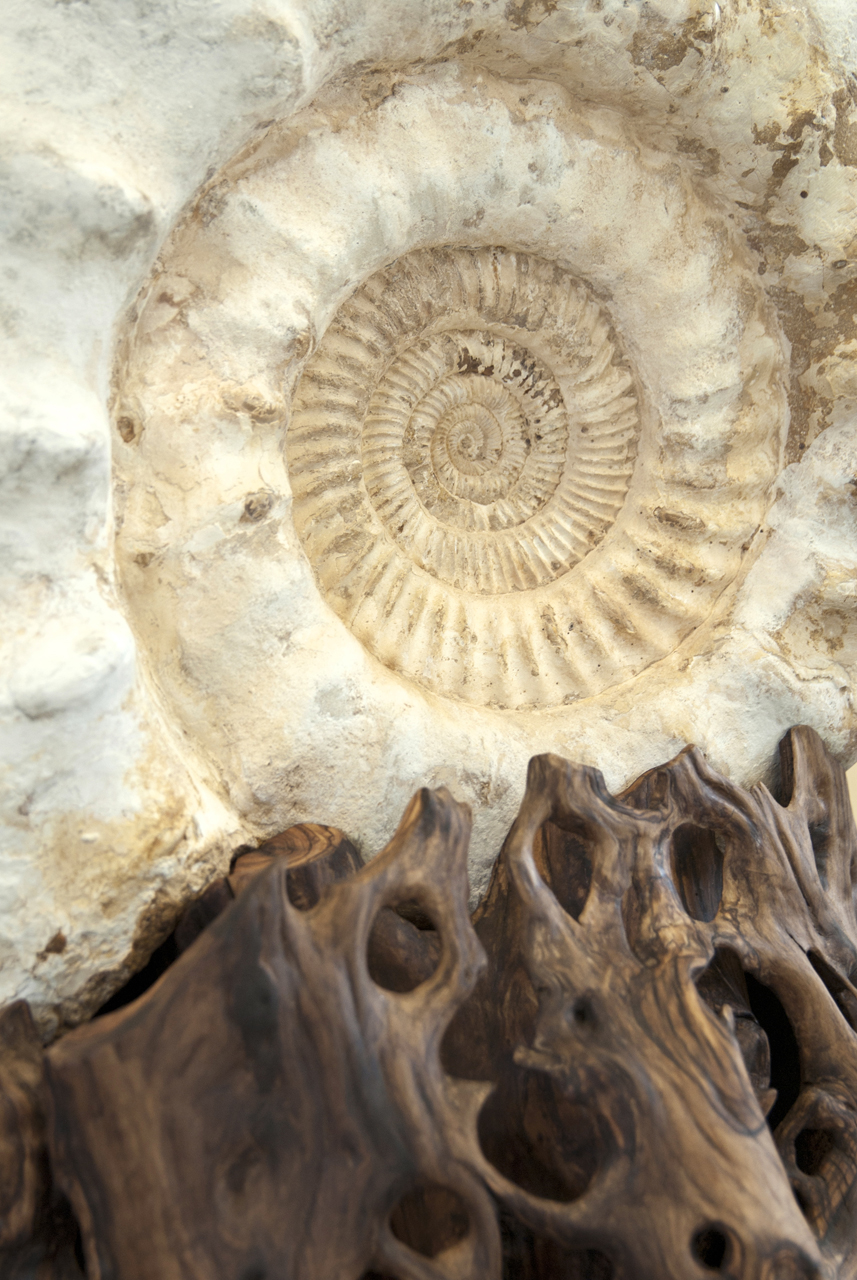Connected – together I am strong
Spring 2022. Once again, I find myself in Henrik Hackl’s studio. We haven’t seen each other in a while. Hendrik opens the door to the showroom and once more I enter into the silence and sublimity of these elaborate witnesses of a past that has been gone for a million years. While I’m finding my bearings, I immediately recognize old acquaintances but also percieve several new art pieces. As I stroll through the room, I find myself engaging – as several times before – in a silent conversation with the sculptures. One object in particular catches my eye and I pause in front of it for a long time: „Connected“, an ammonite from Madagascar, 120 million years old. Its surface shimmers brightly on one side, almost white. At the back, the ammonite is left in its natural state, its colour a warm beige. It is not on its own; instead, as if merged into one, it snuggles into a small trunk of dark brown, gnarled olive. It seems as if the old wood keeps the ancient ammonite safe and snug. I am fascinated by the mix of materials. I am even more fascinated by how harmoniously these uneven materials meet; by the seeming ease with which Hendrik joins fossils and natural materials into beautiful art pieces; and by the ways in which his snapshots of evolution keep reminding us of where we as humans come from – and where we will go.
We thrive in community
- Fellowship. It is likely that I am not stopping in front of this particular art piece at random. Connected – this word evokes the feeling of belonging to another person or a group of persons, of forming a community and being in a trusting relationship.
Human beings thrive in community – be it in a romantic relationship, in one’s family, in belonging to a religious, professional or political group or a geopolitical place. I feel connected to my family, my friends and the women in my professional network.
The term fellowship not only encompasses the present or the connection to living persons; it also refers to the connection with other generations. Just like Henrik’s artistic crafting puts the ancient ammonite into a harmonious relationship with the much younger olive trunk.
Connected tells the tale of pieces which in reality have never met – and whose touch renders them into pure art. Henrik put them together in such a way that they seem inseparable – as if one had never existed without the other. I appreciate both the ammonite and the wood in their singular beauty and feel touched by their being seemingly naturally Connected.
Nobody is surprised when the artist and I subsequently sit down with a cup of tea and have a long chat about bonding, nature, art and time. We sit between all these grand witnesses of the past and talk of connectedness: to the past – but also to the following generation. Henrik tells me about his father, I tell him about my children. We talk of generational justice and of leaving behind a world in which they can live comfortably. From this day on, „Connected“ also encompasses the budding relationship between Hendrik and I.
